HISTORY
Domaine du Plessis Glain lies on the first hillsides south of the Loire, near Saint-Barthélémy Chapel. This family-owned wine estate, which took its name from a former fortified house, has been in the Pétard family since 1840. Today it is run by Vincent Pétard and Christophe Bazile, two childhood friends who entered into partnership in 2014.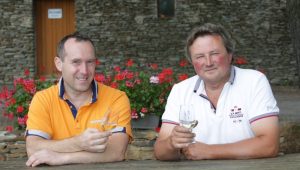
As independent winegrowers, all of our wines are produced, aged and bottled by the estate with care. We also market and sell our wines ourselves. We welcome visitors for tastings at the winery, attend trade shows and wine fairs and work with various commercial partners.
Today, the estate has 37 hectares of vines. Muscadet Sèvre et Maine accounts for half of our vineyard while the other half is devoted to growing Vin de Pays de Val de Loire (IGP wines ) from Gamay, Cabernet Franc , Cabernet Sauvignon, Egiodola, Chardonnay, Pinot Gris, Sauvignon Gris and Merlot. The vineyard has light, stony soils of a sandy nature, on a substrate of micaschist.
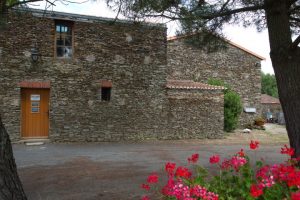 Both manual and machine harvesting methods are used. Grapes go through a pneumatic press before fermentation in underground vats or in temperature-controlled stainless steel vats above ground, in order to obtain the best expression of the terroir in the wines. The wines are aged on lees or in oak barrels until bottling.
Both manual and machine harvesting methods are used. Grapes go through a pneumatic press before fermentation in underground vats or in temperature-controlled stainless steel vats above ground, in order to obtain the best expression of the terroir in the wines. The wines are aged on lees or in oak barrels until bottling.
Located where the land starts to slope up out of the Loire Valley, the estate offers a striking view of Nantes and the market gardens in the valley beneath. Saint Barthélémy Chapel, which stands a short distance from the estate, dates from the 13th century. It was built on the ruins of ancient Gallo-Roman thermal baths. The water of the fountain is reputed to have healing properties and is blessed during an annual pilgrimage there.
OUR METHODS
The Vines
We are committed to developing environmentally responsible practices and therefore our winegrowing methods are evolving.
HVE (High Environmental Value) is a national certification scheme run by the French Ministry of Agriculture.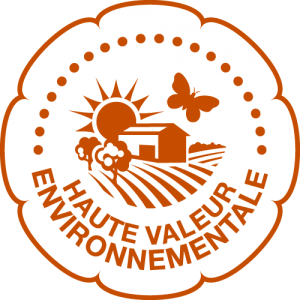
Working towards the HVE certification was a proactive decision, which has led us to focus on improving four aspects in the vineyard:
- Biodiversity: Cover planting, grassy embankments, etc. Planting of hedges, preservation of isolated trees, etc. Plant diversity (grape varieties and rootstock), soil conservation.
- Plant protection strategy: Reduction of inputs, traceability, conditions of application, development of alternative methods (sexual confusion).
- Controlled fertilisation management: Type and quantity of fertiliser, nitrogen balance, method and date of application.
- Water management: Respect for watercourses, management of equipment washing and discharges.
To improve our vineyard practices, we have begun using new methods and equipment, for example:
- A leaf stripper, purchased jointly through a farming cooperative (CUMA)
- A Loiseau high-clearance tractor with inter-vine discs or blades for tilling
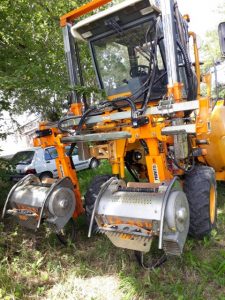
- Manual bud removal
- Shredding of vine prunings
- Trimming of the canopy
- Palissage (trellising)
All of these efforts have naturally led us towards a conversion to organic since 2019 for 10ha of Muscadet.
The Tristan cuvée is the first organic wine for the estate with the 2022 vintage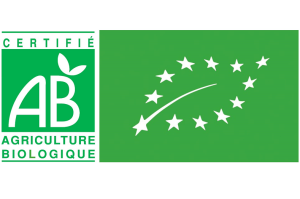
The Wines
In 2016/2017, we modernised our winery with a new insulated building. This has made it easier for us to control temperatures, 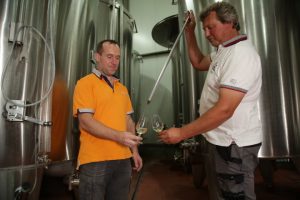 which is a vital aspect of winemaking.
which is a vital aspect of winemaking.
We ferment our white and rosé wines at low temperatures of between 17°C and 18°C, which is ideal for the development of aromas and structure. The red wines spend two to three weeks in vats in order to extract tannin and colour.
When the fermentation of the wines is complete, we prepare the blends then bottle the wines. Most of our IGP Val de Loire wines are blended and we take a meticulous approach to this task which allows to create our own original blends from the grape varieties that we choose.
Rewards
The wines of the estate regularly win awards at competitions. Below is the list of awards won at official wine competitions over the last few years. View rewards



